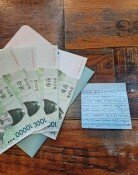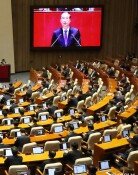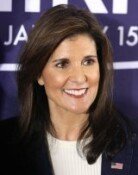[Editorial] Big Government Burdens Taxpayers
[Editorial] Big Government Burdens Taxpayers
Posted April. 25, 2007 03:16,
The government confirmed the 2008 management plans for the budget and public funds exceeding 250 trillion won in the State Council yesterday. Next year, the total public spending is expected to hit a six-year high, up seven to eight percent from this year. Under the plan, the government will spend a significant amount of budget on welfare programs, KORUS FTA follow-up measures, and a two-step initiative for balanced national growth.
Apparently, the incumbent administration is busily enlarging itself under the name of a responsible government instead of a small government by scaling up fiscal spending and the number of public officials. The Cheong Wa Dae Briefing proudly stated in its recent report on the comparative analysis of budget spending, The current participatory administration, unlike former administrations, raised the proportion of welfare spending from 20 to 28 percent, higher than the economic development budget at 18 percent. However, chances are that the governments inefficient enforcement of welfare spending can end up in sharing existing resources which will fail to contribute to socio-economic development.
Just taking a look around society exposes so many loopholes in the wasted budget. There are many empty rice threshing and pounding mills in the rural areas. That is because when these facilities across the nation can polish 26 million tons of rice, only less than a fifth of the amount, or five million tons of rice, is annually produced. No wonder the underutilized mills run a huge deficit. The Board of Audit and Inspection pointed out about 130 billion won of public spending was lost in these facilities. A number of agricultural products refrigerating storages with nothing to warehouse have become playgrounds for children.
There are rumors going on about blind money in the countryside. Over 60 trillion won was allocated to financial assistance for farming and fishing households after the conclusion of the Uruguay Round in 1994. Next years budget includes spending on industries expected to be harmed by the KORUS FTA. The money, however, is not for a true restructuring but for mollifying angry farmers, which can further aggravate problems in the rural areas. This also runs counter to the spirit of the FTA, aimed to advance the industrial structure through market opening, resulting in a setback of the market economy in the rural communities.
A business leader described government spending as drugs. Once financed by government budget, you get addicted. People no longer work hard to run their businesses and instead wait for public money. Some people manage their companies only with financial assistance from government venture programs, SME assistance programs, Commerce Ministrys budget for fostering state of the art technologies, and the Gyeonggi provincial fund. Too much money is managed in the hands of public officials, he said. These firms seek a fortune not by turning profits with sales and production but by submitting a plausible business blueprint to the government.
The loopholes are numerous. The Ministry of Commerce, Industry, and Energy and Ministry of Information and Communications wrangled over the DMB project, touted as a next generation national growth engine. Finally, each launched related businesses to develop the technology. Indeed a great loss to the national competitiveness. In Vision 2030 presented by the government, the Welfare Ministrys selective welfare projects for the physically challenged overlap with rearing assistance for families with disabled children crafted by the Ministry of Gender Equality and Family. As such, welfare spending is repeatedly allotted in many areas.
Local governments with deep coffers relay blocks on the streets every year. They fear that this years underutilized budget will lead to next years budget cut. A ward office in Seoul purchased a large sedan with a 3300 cc engine for distinguished visitors, but the car has long stayed in the garage. Seoul Post, a public postal service, bought a conveyor belt for parcels to be loaded onto vehicles, but used it only three times and threw it away because it did not fit the standardized size. A city in the Gyeonggi Province built a municipal government complex bigger than the central government complex.
All these are examples of moral hazard in the public sector. No one will dig into his own pocket to this extent. It is natural that there is not much ownership in the public sector because it does not risk competition or bankruptcy. Concepts like management or cost are relatively nonexistent. There are few incentives to drive hard work. Evaluation is another complex process. It is hard to hold someone accountable as many institutions are related in one project and officials have to often change their positions.
The best way to prevent this moral hazard in the public sector is to let the private sector assume what it can do. If the government cannot be assured of the private sector, it has to come up with a thorough review mechanism. However good objective it has, if the project runs the risk of losing transparency, it should never be started. Waste of public resources incurred by faulty institutions is a problem itself, but it could further give rise to inefficiency and distortion in the whole market. Public administration promoting moral hazard weighs heavily down taxpayers. It is public enemy number one that is plaguing the average Korean household.







